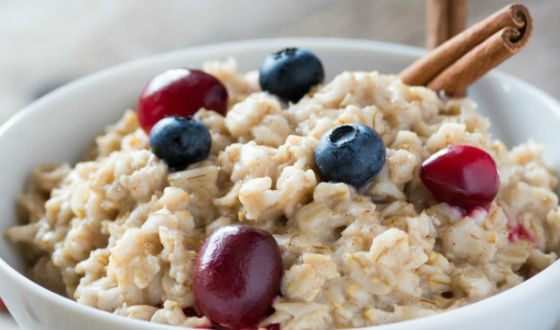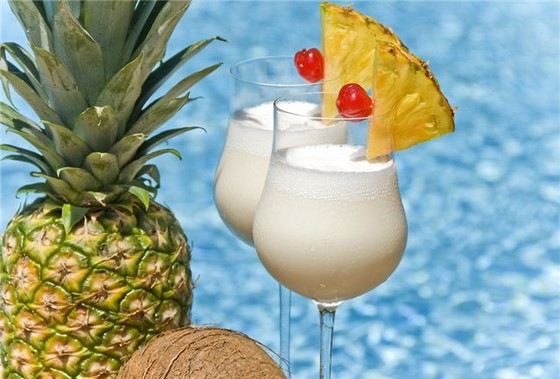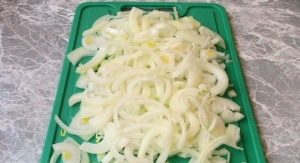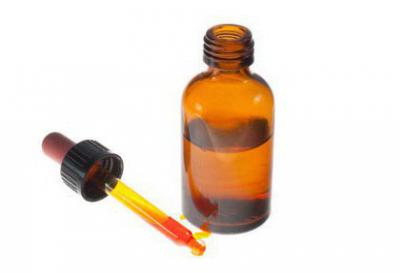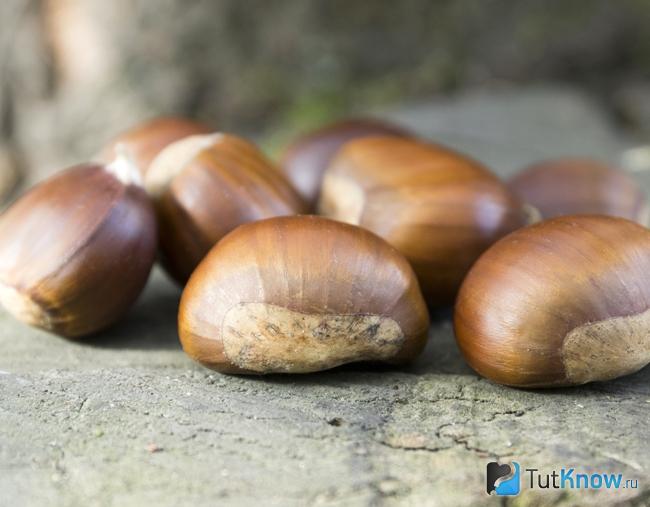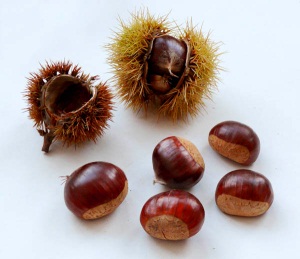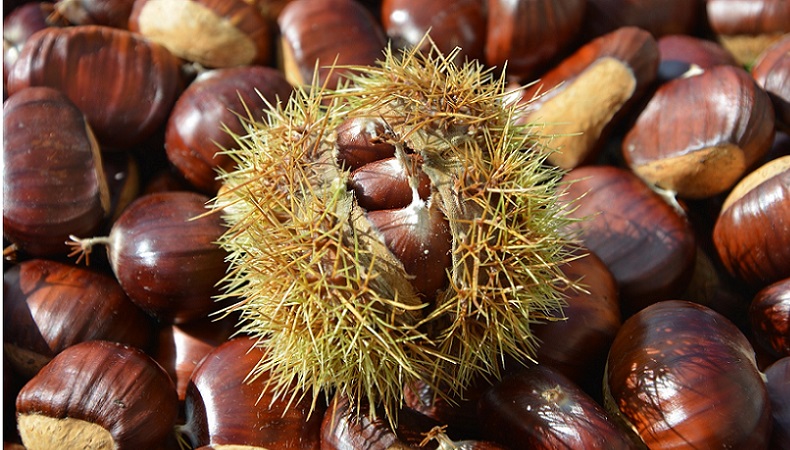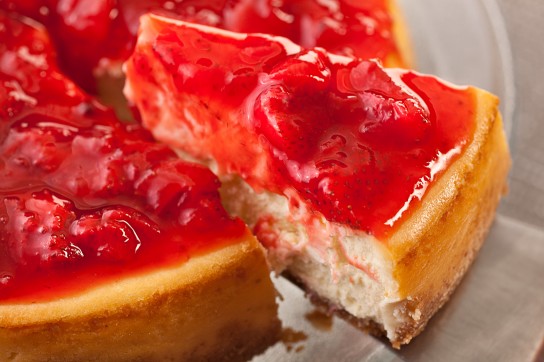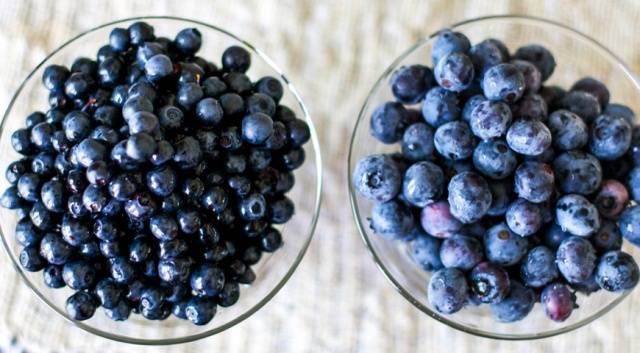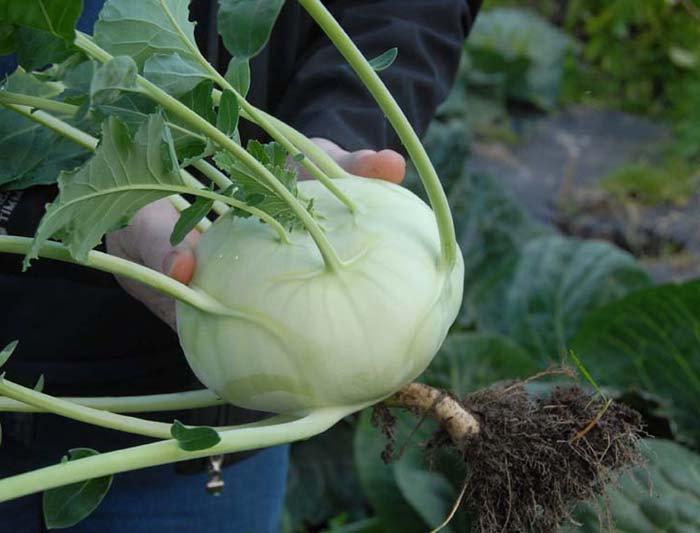Chestnuts: how to eat them and how to cook. What are valuable edible chestnuts and how to cook them
Edible chestnuts: calorie content, chemical composition and useful properties, harm from eating fruits. Recipes from them. Interesting facts about the plant.
The content of the article:
Edible chestnuts (Castanea sativa) are the fruits of the planting chestnut (edible, noble, real), which are considered to be from the Bukov family. Outwardly, they look like hazelnuts, only large. The box is large, the shell is smooth, “varnished”, heterogeneous brown. The tip of the fetus is pointed. In the context, within the common box, in wild species, 2-7 nuts with dense elastic white pulp surrounded by a yellowish shell separating the fruits from each other. Specially grown crops under a shell have 1 core. The nuts are surrounded by a green plush, from the inside it is rough, and from the outside it is covered with branchy spines, which harden as the fruit ripens. The leaves are elongated, along the edges of the cloves, spiral-double row, leathery. The flowers are collected in large spike-shaped inflorescences, white, foamy pink or yellow, emit a bitter, disturbing smell, intensifying at night. Distribution of edible chestnuts: on the coast of the Atlantic Ocean in the USA, in East Asia and in the Mediterranean.
The composition and calorie content of edible chestnuts

Only the fruits of a noble chestnut, which is also called real, edible or sowing, can be eaten. The figures are for European edible varieties.
Fresh edible chestnut calories - 196-213 kcal per 100 g, of which:
- Proteins - 2.4 g;
- Fats - 2.3 g;
- Carbohydrates - 45.5 g;
- Ash - 0.91-1 g;
- Fiber - 8.1 g;
- Water - 41.7-48.65 g.
Vitamins per 100 g:
- Vitamin PP, niacin equivalent - 1.179 mg;
- Vitamin C, ascorbic acid - 43 mg;
- Vitamin B9, folic acid - 62 mcg;
- Vitamin B6, pyridoxine - 0.376 mg;
- Vitamin B5, pantothenic acid - 0.509 mg;
- Vitamin B2, riboflavin - 0.168 mg;
- Vitamin B1, thiamine - 0.238 g;
- Vitamin A, retinol equivalent - 1 mcg.
- Potassium, K - 518 mg;
- Calcium, Ca - 27 mg;
- Magnesium, Mg - 32 mg;
- Sodium, Na - 3 mg;
- Phosphorus, P - 93 mg.
- Manganese - 0.952 mg;
- Copper - 447 mcg;
- Zinc - 1.1 mg;
- Iron - 0.52 mg.
- Arginine - 0.173 g;
- Valine - 0.135 g;
- Histidine - 0.067 g;
- Isoleucine - 0.095 g;
- Leucine - 0.143 g;
- Lysine - 0.143 g;
- Methionine - 0.057 g;
- Threonine - 0.086 g;
- Tryptophan - 0.027 g;
- Phenylalanine - 0.102 g.
- Alanine - 0.161 g;
- Aspartic acid - 0.417 g;
- Glycine - 0.124 g;
- Glutamic acid - 0.312 g;
- Proline - 0.127 g;
- Serine - 0.121 g;
- Tyrosine - 0.067 g;
- Cysteine \u200b\u200b- 0.077 g.
Fatty acids per 100 g:
- Omega-3 - 0.095 g;
- Omega-6 - 0.798 g.
- Myristic - 0.01 g;
- Palmitic - 0.384 g;
- Stearin - 0.021 g.
- Palmitoleic - 0.021 g;
- Oleic (omega-9) - 0.749 g;
- Gadolein (omega-9) - 0.01 g.
- Linoleic - 0.798 g;
- Linolenic - 0.095 g.
Useful compounds are found not only in the fruits, but also in the leaves of the plant. They contain tannins, pectins, glycosides, vitamin K and B vitamins.
Useful properties of edible chestnuts

Fruits are widely used in cooking and made from them drugs for the treatment of many diseases.
The benefits of edible chestnuts:
- Eliminate edema and improve expectoration for colds.
- They have a bactericidal effect and inhibit the vital activity of mold fungi.
- Accelerate intestinal motility and have a diuretic effect.
- Improve digestion and prevent irritation of the digestive organs. Thanks to pectins, the use of chestnuts reduces the acidity of gastric juice.
- They help stop internal bleeding, both intestinal and uterine.
- Edible chestnut normalizes the condition of atherosclerosis, eliminates blood circulation problems.
- Poultices from a decoction of fruits heal trophic ulcers that appear due to thrombophlebitis and varicose veins.
- Increase the tone of the vascular walls and the strength of the capillaries.
- They increase the body tone and allow you to replenish the supply of nutrients.
The glycemic index of fresh chestnuts is not very high - 54 units, which allows them to be used for diabetes.
It is worth introducing nuts into the diet, albeit a few pieces, and you can forget about depression, insomnia and emotional instability.
Harm and contraindications to edible chestnuts

Despite the many useful properties, not everyone can add fruits to the daily menu.
Edible chestnuts can cause harm in the following diseases and conditions:
- Renal failure;
- Peptic ulcer during exacerbation;
- Diabetes;
- Cardiovascular diseases occurring on the background of hypotension;
- Individual intolerance;
- Menstrual irregularities, if the endometrium is practically not separated and menstruation is limited to anointing;
- Obesity;
- Pregnancy, lactation and childhood.
Chestnuts are considered heavy food. Overuse can lead to increased intestinal gas production, constipation, bloating and nausea, and symptoms of intoxication. During pregnancy and in childhood, digestive disorders can provoke intestinal obstruction.
If a child wants to introduce a new dish into the diet, then the chestnut flesh should be brought to softness and rubbed through a sieve. Mashed potatoes are added little by little to potatoes or to soup, analyzing the condition of the baby. And even then, this should not be done until he is 4-5 years old so as not to cause diseases of the pancreas and stomach.
How to eat chestnuts

In fresh chestnuts, the shell is quite difficult to separate. If you plan to cook some dish, then remove the skin from the fruit, almost like a tomato. That is, they make a longitudinal incision, dip the nut in boiling water and remove the varnished skin with a knife.
There is another way to get to the sweet pulp and how to eat edible chestnuts:
- The top of the fetus is incised from the "peaks";
- Boil the fruits in boiling water for 3 minutes;
- Freeze for 5-6 hours in the freezer;
- Dipped in boiling water, and then doused with running ice water.
Edible Chestnut Recipes

This is a universal product. Nuts can be served as a side dish, add to desserts, grind in flour to flavor pastries, use as an ingredient to stuff meat.
Edible Chestnuts Recipes:
- Pilaf. Long-grain rice, 500 g, is washed, ensuring that the water becomes clean, refilled with cool water and left for 2 hours. 0.5 kg of mutton is cut into portions and boiled until tender, removing the foam and salting. Dried apricots and raisins, together a little more than a glass, are poured with boiling water for 10 minutes. Chestnuts, about 100 g, peel. The fruits are boiled in boiling water for 5-7 minutes. 2 medium onions finely chopped with straws and fry until golden brown for 80 g of butter. When the onion becomes beautiful, soaked dried fruits are spread in the pan, squeezing the water. After another 15 minutes, add meat and stew for another 15 minutes. Soaked rice is boiled until half cooked, it is not recommended to digest. Tilt it onto a sieve to remove the liquid. Set aside 5 tablespoons of rice, mix with half or a third teaspoon of turmeric and a raw egg. This mixture is called gazmah. In another cup, 80 g of oil are mixed, another third of a teaspoon of turmeric, salt and melt in a water bath or in the microwave. The bottom of a thick-walled pan is greased with butter, smeared with a layer on the bottom of the gas, and then spread the rice in layers, laying with the remaining mixture with salt and turmeric. Chestnuts are pushed into the top layer with your finger so that they fully enter the rice. The pan is covered with a waffle towel, then the lid and put to simmer until rice is cooked. The meat and rice are combined in plates when served.
- Roasted chestnuts. The oven along with a baking sheet is heated to 220 ° C. The fruits are washed, on the side of the peaks they make a cross-shaped incision. Spread on a baking sheet with the smooth side down and bake for about 20-30 minutes, until the peel is bent by the petals. Ready "nuts" are tightly wrapped in a clean waffle towel. After 5 minutes, when the roll is deployed, the peel remains on it. Chestnuts can be served with salt or paprika.
- Soup. Transparent meat broth, 1 l, is prepared in advance using water, meat and onions for cooking. Be sure to remove the foam. Chestnuts, 500 g, are cleaned in the second way, pre-boiling. When the peel is completely removed, the fruit is boiled for another 3-4 minutes. Chestnuts are lowered into the broth, and while they are boiled, chopped with straws (or rubbed on a coarse grater) 2 large carrots, 1 turnip and 1 onion. Fry vegetables in butter. When the vegetables are fried, the chestnuts are removed from the pan, mashed in mashed potatoes, adding a teaspoon of sugar. Vegetables and nuts are again laid out in a pan and boiled for another 3-4 minutes. Served with croutons.
- Christmas dessert. Slightly smaller tiles of dark chocolate, 150 g, melt in a water bath, pour cognac, 6 tablespoons, and half a teaspoon of vanilla and coffee extract. Mixed. Remove the container from the water bath and put 100 g of butter in it - it should melt on its own. Stir when the oil melts. 500 g of peeled chestnuts are cooked until tender, beat with a blender in mashed potatoes and a half glass of sugar, mixed with an butter-chocolate mixture. Using a foil, the dough is shaped into logs. Leave to solidify in the refrigerator. To harden, usually enough night. In the morning, the foil is removed, and the log is decorated. Once again, prepare a water bath, melt 50 g of butter, 150 g of chocolate, pouring a tablespoon of brandy. When you get a uniform consistency, decorate the log with patterns or cover it with an even layer of glaze. For another 2-3 hours, clean in the refrigerator so that the fudge freezes.
From nuts you can cook not only dishes, but also drinks. Consider the most popular of them:
- Kvass. In a three-liter container, dip 40 pieces of cut fruit without a peel, fill it with water, pour a glass of sugar and pour a tablespoon of sour cream (can be replaced with half a glass of milk sourdough). Leave to ferment for 2 weeks at a temperature slightly above room temperature - 25-35 ° C. Such a drink not only quenches thirst, but also helps to remove toxins and free radicals from the body.
- Cocktail. Prepare to make a drink in advance. 200 g of chopped roasted chestnuts are poured into a bottle of cognac and left to infuse for 2 weeks. When the tincture is ready, you can start preparing the drink. The shaker is placed: 120 g of cognac tincture, 45 ml of fresh lemon juice, 60 ml of red vermouth, pour a handful of saffron. All are mixed. Put ice in a glass, and then pour a cocktail. You can reduce the amount of lemon juice and put a lemon slice directly into the glass.

The fruits of the planting chestnut have been eaten since ancient times. Petrified boxes in ash were found in the Lower Tertiary sediments in the Ussuri Territory and the Black Sea, in Bashkiria near Sterlitamak and in the Caucasus. It can be concluded that in those days edible chestnuts grew throughout Eurasia.
When it comes to the edible fruits of chestnuts, clarification is required. Chestnuts are called fruits of the stomach, horse chestnut, from the Sapindov family, or chestnut sperm from the legume family, but their fruits are inedible, and even poisonous in the stomach.
In ripe edible chestnuts, the ossified shell opens, crackes, and nuts fall to the ground, where they are subsequently rooted or eaten by artiodactyls. Trees grow quickly enough and begin to bear fruit in the 4th-5th year. They can grow up to 50 m.
The oldest beech tree is listed in the Guinness Book of Records. With a trunk circumference of 57.9 m. Are biologists still trying to accurately determine his age and wonder how old he is - 2000 or as much as 4000?
In the Middle Ages, the roofs of castles were made of beech wood. Spiders do not weave cobwebs on beams of its wood.
By the number of nutrients, fresh chestnuts are similar to brown rice. Therefore, it is not surprising that the Chinese eat 40% of the fruits. The calorie content of Chinese chestnut is higher than European - 224 kcal.
Chestnut is the only nut that contains ascorbic acid. And to taste it looks more like potatoes, too many starchy substances.
Watch the video about edible chestnuts:
Now fresh edible chestnuts have appeared in supermarkets. They are not so expensive, so do not miss the opportunity to introduce a new dish into the diet. Just remember: there is moisture inside the nut. Therefore, before diving in boiling water or frying, do not forget to incise the shell. Otherwise, an explosion will occur. 1 fruit will explode - it’s not scary, but a few can break the pot, microwave, break the glass in the oven. For this to happen, before cooking, you should find out how chestnuts are eaten.
Many people know that chestnuts can be eaten. They are eaten fried or boiled, also used as an additional ingredient. In some countries this is the most popular delicacy, in France it is considered a national dish. But not all fruits are allowed to be eaten, the benefits and harms of chestnut for the body depend on the selected variety.
Chestnut features
This plant belongs to the genus beechen. There are two types of it. Horse chestnut is ubiquitous. These are trees with a lush crown, pyramidal inflorescences and rounded fruits in a sheath protected by thorns. You can’t eat them because of the high content of tannins. In high concentration, they can harm the body, even cause poisoning.
Unlike horse chestnut, the noble produces edible fruits. It has a different leaf shape, in one box can be up to 4 nuts. These plants are found in a subtropical climate, mainly they can be found in Europe, America, Asia. But those who live in areas where this nut does not grow can enjoy it, because it is easy to purchase in a store.
Chestnut, the benefits and harms of which depend on the composition, has a distinctive feature: the fruits contain much less fat than other nuts. But they have a lot of proteins, which is especially important for vegetarians who do not eat animal food. They also have fiber, tannins and sugar.
The mineral and vitamin composition of chestnut fruits is also rich.
- Vitamin K is able to stop bleeding, it is necessary for the proper formation of bone and muscle tissue.
- Vitamin A supports visual acuity, has regenerative qualities.
- Vitamin C strengthens the protective properties of the body, has a positive effect on blood vessels.
- B vitamins are necessary for the normal functioning of the nervous system, improve the condition of the skin and hair.
- Magnesium: also favorably affects the nervous system, normalizes blood pressure.
- Potassium normalizes the functioning of the cardiovascular system.
- Copper is necessary to maintain hormonal balance.
The benefits of chestnut are very great. But only if there is a moderate amount of fruits, because they are quite high-calorie - about 170 kcal per 100 g. Moreover, their calorie content is lower than that of other nuts, so even those who adhere to the diet can include them in their diet. You also need to remember that roasted chestnuts are more high-calorie than otherwise prepared.

Effects on the body and contraindications
It is not for nothing that chestnut nuts are valued, the benefits and harms of which to a large extent depend on the method of use. Fruits give strength and provide the body with a supply of energy, they improve memory and increase efficiency. They recommend eating them during periods of stress and chronic fatigue. Thanks to the fiber that they contain, nuts will help improve digestion and normalize bowel function. Tannin components help get rid of diarrhea. The fruits make sleep calm and strong, remove insomnia.
Chopped edible chestnut can be added to wholemeal flour for baking. Such a powder will also become an unusual seasoning for porridge.
Not only nuts are useful, but also other parts of the plant, that is, leaves, flowers and bark.
- A decoction of fruits and leaves has anti-inflammatory properties, it is recommended to use it to treat the upper respiratory tract.
- To relieve fatigue in the legs, you can make baths with a similar decoction.
- A decoction of the cortex will help relieve swelling of the nasopharynx. It is used for washing the nose.
- The benefit of chestnut is that the infusion of bark and fruit helps with hemorrhoids. You need to drink a tablespoon of the drug three times a day.
- Infusion can be used to treat wet wounds.
Not everyone is advised to consume edible chestnuts. The benefits and harms of them are due to the composition. There are some contraindications: you can not enter them in the diet for kidney failure, women in position and nursing mothers should also refuse them. Also, individual intolerance is sometimes found.

Cooking methods
The question may arise how to cook chestnut. Useful properties may depend on the recipe selected. Especially popular in a number of countries are baked fruits. Make them very simple. It is necessary to slightly incise the top of each nut so that they do not burst. Then put on a baking sheet and place in a preheated oven for a quarter of an hour. When they have cooled slightly, they should be peeled. Can be seasoned with butter.
Other recipes use peeled chestnut fruits. Their benefit and harm as a result of separation from the shell does not change. To facilitate the process, the nuts are immersed in hot water for a couple of minutes, having previously cut the skin. It is important to completely remove all films, as they are bitter. Then you can cook such dishes.
- Cooked chestnuts.
A simple way, but there is no doubt in the health benefits of chestnuts prepared in this way. They should be cleaned, filled with cold water and put on fire. After 20-30 minutes, when they become soft enough, the water must be poured, and the fruits themselves covered and held for 10 minutes in a warm place. Serve on the table by adding butter.
- Chestnut puree (used for sauces).
To get an unusual addition to meat, you should boil the fruits in meat broth. After a quarter of an hour, remove and thoroughly knead with a fork or grind with a blender. Then add cream, butter, salt and nutmeg to taste. To stir thoroughly.
You can get a sweet sauce for desserts. To do this, chestnuts are boiled in sweetened milk.

The use of chestnut for treatment and cosmetology
Chestnut, the benefits and harms of which deserve attention, is used not only as a delicious dish. Perhaps treatment with it. Horse chestnut tincture proved especially good. The product helps to reduce the manifestations of radiculitis and varicose veins and even eliminates cellulite.
- To prepare a drug for thrombophlebitis, a bottle of vodka will need 50 g of raw materials. The drug should be allowed to infuse for a week in a dark place, then drink twice a day before meals.
- The benefits of chestnuts are their ability to reduce varicose veins. To do this, 100 g of the fruit, along with the shell, is rolled through a meat grinder, poured with a liter of vodka and insisted for three weeks. Then it is filtered and applied overnight to the skin without rinsing.
- The same tool will relieve pain in the joints, for this they must be rubbed overnight.
Horse chestnut recipes can also be used.
- For 5 liters of water, you need to take 1 kg of raw material along with the peel. Boil for an hour. Strain, then add to the bath. It is also allowed to make promises by wetting the bandages and wrapping them around the feet. The tool helps to remove the heaviness in the legs, improves the condition of the veins.
- Such a remedy is suitable for combating cellulite. 100 g of chopped nuts should be mixed with the same amount and 200 g of olive oil. Let it brew for several days, immediately before use, add the essential oil of orange or grapefruit. Then do massage on problem areas.
- To remove lower back pain, you can mix lard and ground fruits, apply to the cabbage leaf, place on the lower back and tie with something warm.
The benefits of chestnuts are noticeable in cosmetology. The healing qualities allow the use of fruits in skin and hair products. They are able to protect the skin from the harmful effects of ultraviolet rays, so they can be found in sunscreens. Walnut oil will help increase turgor and nourish aging skin. It is applied to the face for a quarter of an hour, then washed off with warm water.
A simple infusion can have a lifting effect. To get it, you need to pour chopped fruits with boiling water and let stand for a couple of hours. The resulting product should be wiped daily on the face.
Chestnuts can be a valuable dietary supplement, tasty and nutritious. Edible and horse chestnuts should not be confused. The former are suitable for eating, the latter are suitable for the preparation of medicinal tinctures. When using such funds, the benefits and harm to the body depend on how correctly the preparation technology and dosage are observed.
The Chinese consume more than 50% of the world harvest of chestnuts, the French celebrate a real chestnut festival and fry the fruits, going to the central squares, in huge pans.
In Russia, chestnuts are not grown, so European treats can only be found in supermarkets.
There are 2 varieties of chestnuts:
1) Horse chestnut - poisonousunsuitable for food, but is actively used in medicine and cosmetology.
2) Noble ("real") - its fruits are edible.
It will be about the fruits of edible chestnut. How useful and what harm can they bring to our health?
Edible chestnut: composition, as used
Externally, the chestnut is easily confused with hazelnuts - brown, round, with a strong shell. Its consistency is similar to mashed potatoes, and tastes somewhat like potatoes or corn. Pleasant and sweet in taste, the composition of the chestnut is rich in healthy substances.
The composition of the chestnuts is as follows:
Minerals (carbohydrates, starch)
Cellulose
Carbohydrates
Proteins
Vitamins A, B, C
Beta carotene
Calcium, magnesium, sodium, potassium, etc.
Edible chestnut: what are the benefits for the body?
Useful for vegetarians is the property of chestnut - a huge content of vegetable protein in it. Therefore, it will serve as an excellent substitute for animal protein in the human body.
Chestnut - a cure! Not only the fruits of the chestnut, but also the bark, leaves and buds benefit human health. Chestnut broth is perfect for diseases of the upper respiratory tract, for the treatment of hemorrhoids, thrombophlebitis and dilated veins of the nasopharynx. It increases vascular tone, lowers the fragility of capillaries, and blood flow speeds up.
Chestnut broth perfectly refreshes the skin. It is enough to take two tablespoons of crushed chestnut and pour a glass of boiling water. Done! Wipe your face every 2-3 days. After a month, the skin ceases to be dry, inflammation and redness pass, small wrinkles are eliminated.
Chestnut - an energy bar! Yes, it’s hard to believe, but only 2-3 chestnuts for dinner saturate our body, and there will be no hunger. An ideal option to freeze the worm and moderate the appetite that wakes up at night. Also, chestnut helps get rid of malaise and fatigue.
There is an interesting fact that direct contact with a chestnut can charge you with energy, strength and a good mood. Take a trip to Southern France, Spain or Italy, where the fruits of chestnuts are grown, and be sure to check the veracity of the statement.
Chestnut - an assistant in the diet! It contains a small amount of fat, so this product must be added to the number of the first when drawing up a vegetarian diet, because it contributes to weight loss. It is almost impossible to recover even from a large number of eaten chestnuts. Chestnut is also useful to athletes before and after training.
Chestnuts - a side dish for roast. The French consider chestnuts to be indispensable assistants in the preparation of their culinary masterpieces. Chestnuts are baked, boiled, fried until golden brown. Add to salads, cereals and even wine. Once in the same container with meat, they give it an excellent aroma and unusual taste. Chestnut is a favorite product of the masters of the kitchen. At the same time, chestnuts baked in the oven can also be an independent dish.
Chestnut - the perfect dessert for ice cream! To prepare it, you need only 4 ingredients: 500 g of chestnuts, 80 ml of brandy or wine, 3 tablespoons of butter, 2 teaspoons of sugar. Chestnuts are pre-cooked for 5 minutes in boiling water, then peeled and spread in the form of butter and sugar. The form is sent to the oven and baked for 10-15 minutes at a temperature of 200 degrees. Cooked fruits should be sprinkled with cognac and served with ice cream.
Chestnut - a panacea for many diseases. Doctors often talk about the incredible healing energy of chestnuts, which not only act as a preventive measure, but also treat diseases such as mastitis and mastopathy. The fruits of this plant are also used for massage of the mammary glands. However, self-medication is not worth it, any therapy must necessarily take place under the supervision of a doctor.
In order to cope with cellulite, just make simple chestnut scrub: mix olive oil, basil or other herbs, essential oil and directly the chestnut itself, previously ground.
Health benefits for people with a sore back. With radiculitis is enough sleep on chestnuts. The body will receive a natural massage that strengthens the nerve roots and the pain begins to subside. With diseased joints, you can make a bracelet from dried chestnuts and carry it on your hands. There are enough 6-7 pieces in the bracelet.
Rheumatism is considered one of the most dangerous and common diseases of mankind. For rheumatism, a good prevention is the constant fingering of chestnuts. By making the hands work, the motor skills of the fingers improve, and the bones are strengthened.
Chestnut cleanses the body, removes harmful substances and promotes proper functioning of the body’s internal system. Chestnut tincture can be used as a diuretic and anti-edema. The tannins in the composition of chestnuts help with furunculosis. Chestnut-based products treat wounds and burns.
Supporters of traditional medicine advise carrying chestnuts in their pockets in order to protect themselves from ailments, protect against life troubles and health problems.
Another useful property of chestnut for sensitive people, prone to depression and stress - a few pieces of chestnut per day tone up and strengthen the body from the inside.
Calorie chestnut
Chestnut is a great alternative to high-calorie nuts, chocolate bars and seeds. Chestnut is a very low-calorie product - 166 kcal per 100 g product. Roasted chestnuts are, of course, more high in calories. Their energy value rises to 202 kcal.
Edible chestnut: what is the harm to health?
When introducing chestnuts into the diet, be sure to consult a specialist, so as not to harm your health. Since chestnut fruits have a large number of contraindications. If in doubt, it is better to abandon the product so as not to harm your body.
Individual intolerance
Allergies
Renal failure
Pregnancy and lactation
Menstrual irregularities
Gastric bleeding
Diabetes mellitus
Stomach ulcer
As in everything, one must observe the measure when eating chestnuts. Excessive consumption of them can lead to convulsions and problems with the digestive system: constipation, heaviness in the abdomen, nausea and bloating.
Be careful when buying chestnuts.. After all, there is its second kind: horse chestnut. Being poisonous, you can’t eat it. Outwardly, it is very difficult to distinguish them, but there is one small clue: the end of the cotyledon is pointed at the edible chestnut. Eating poisonous chestnuts can cause poisoning, so buy chestnuts only in trusted stores, carefully examining the packaging.
Eating chestnut can harm people suffering from cardiovascular disease. Due to the high content of carbohydrates and starch in them (almost 60%), the load on the heart and blood vessels increases.
Chestnut reduces pressure. Therefore, hypotonics should refrain from using it.
Chestnut is a heavy food for digestion. Poorly roasted fruits can harm the intestines and cause diarrhea. Therefore, people suffering from diseases of the gastrointestinal tract should not eat chestnut in any form.
Chestnut-based scrub can overdry the skin, so it is important not to overdo it and abandon lotions and creams that aggressively affect the skin before applying the scrub.
Edible chestnut for children: useful or harmful
Can I give children chestnuts? And in what form?
Unfortunately, there are no official recommendations for making chestnuts in children's diets. Benefit or harm until the end is not known. However, experts are inclined to believe that the child’s stomach is able to perceive such a kind of food only from 4-5 years old. Being a product difficult to digest, chestnuts are poorly absorbed and harm the baby’s digestive tract. Problems with the liver, kidneys, and pancreas may occur. It is best to cook for children a homogeneous mass of pre-cooked chestnuts and add, for example, mashed potatoes or soups. Chestnuts can cause bloating and constipation in your baby, so be sure to consult a pediatrician to avoid harm to the growing body.
How to clean chestnuts?
There are some tips that will make it much easier to clean your chestnuts:
1) First you need to cut the top of the chestnut, put in boiling water and cook for 3 minutes.
2) Put in the freezer of the refrigerator for 4-5 hours, then dip them in boiling water and substitute under a stream of cold water.
The positive and negative properties of chestnuts are not fully understood. As can be seen from the article, the benefits of chestnuts are significant, and the harm is almost minimal. Chestnut is a delicious sweet, effective medicine and a fruit with beneficial properties. Eat the fruits of the chestnut and be healthy!
Edible chestnuts evoke a pleasant association with France. Autumn, Paris and light smoke from the roasting pan, in which the fruits are baked. This delicacy is firmly entrenched on the tables of the homeland of the Eiffel Tower and is gradually gaining the sympathy of the whole world. With regular use, the benefits of chestnuts are traced. Which one, we will consider further.
Unfortunately, some populations will be harmed by the fetus. If you confuse the product with another species - horse chestnut, this will lead to poisoning. To avoid such situations, you must follow simple rules.
There are two types of chestnuts - horse and noble, or real. The first species is grown for decorative purposes. It is strictly forbidden to consume its fruits, because they can harm the body. These chestnuts are poisonous. But the noble appearance does not pose any danger to humans, and even vice versa. Its benefit consists in arranging the work of body systems and treating various diseases.
The chestnut tree belongs to the beech family. From a botanical point of view, the fruits are nuts. They are grown in Asian countries, some European states, in North America.
In France, the plant is considered a national symbol, in honor of it they even arrange a big celebration. Various sauces, salads, desserts and many other savory dishes are made from the ingredient. In Russia, edible chestnuts are not grown, but many supermarkets sell them fresh and fried. The product has an unusual taste, slightly reminiscent of sweet potatoes with a nutty note.
The composition of edible chestnuts
The fruit is a valuable source of starch (up to 60%) and sugars (15%). Almost 6% is protein and only 2% is fats. The thin transparent film around the nut is insoluble fiber, the benefits of which are obvious for the gastrointestinal tract.
In addition, a small fruit contains tannins and pectins, glycosides, vitamins A, groups B, C. In chestnut there are such minerals: calcium, copper, magnesium, phosphorus, iron, sodium, and potassium.
The energy value of fresh fruits is 180 kcal per 100 g. Roasted nuts are even more high-calorie.
For those who follow their figure, this figure can be quite high. But you can treat yourself to a small number of chestnuts, because they do not overload the stomach and at the same time saturate the body with nutrients.
Positive effect on the body
 The benefits of edible chestnuts are obvious to vegetarians. Fruits allow you to diversify their diet and to some extent compensate for the lack of protein. For therapeutic purposes, use all parts of the tree: bark, flowers, leaves.
The benefits of edible chestnuts are obvious to vegetarians. Fruits allow you to diversify their diet and to some extent compensate for the lack of protein. For therapeutic purposes, use all parts of the tree: bark, flowers, leaves.
They have such an effect on the body:
- a decoction of dry leaves allows you to quickly deal with inflammation of the upper respiratory tract;
- fresh leaves accelerate the treatment of whooping cough;
- alcohol tincture on dry flowers is indicated for catarrh of the bladder and chronic dysentery;
- fruits and bark are used for swelling caused by kidney diseases, ailments of the gastrointestinal tract, nosebleeds;
- a decoction of nuts quickly eliminates boils and abscesses.
The benefits of edible chestnuts do not end there. They are used in different forms for high blood pressure, diseases of blood vessels and heart, thrombosis, varicose veins, hemorrhoids. In folk medicine, fresh nuts help eliminate malaria and chronic diarrhea, while roasted nuts help eliminate hemorrhoidal and uterine bleeding.
Cooking Application
 The recipes for making edible chestnuts are quite simple. The most popular treat is fried fruit. They must first be peeled and membranes removed. Chestnuts themselves need to be incised crosswise or to make incisions on the sides.
The recipes for making edible chestnuts are quite simple. The most popular treat is fried fruit. They must first be peeled and membranes removed. Chestnuts themselves need to be incised crosswise or to make incisions on the sides.
If this manipulation is neglected, then the nut may explode. Then put the product in a pan, cover with a wet towel. Close the lid and give the chestnuts 20-30 minutes. Stir and moisten the wipes from time to time as they dry.
Other cooking recipes offer hostesses to boil the fruits and serve them with different sauces (chocolate, coffee), make mashed soup, pork or lamb with chestnuts. With a rich imagination from the product, you can create real culinary masterpieces.
Contraindications
People with diseases of the gastrointestinal tract, kidneys, heart and liver, hidden pulmonary and gastric hemorrhages are not recommended to use the product without first consulting their doctor. Chestnuts can harm the body and aggravate the course of certain ailments. A categorical taboo is placed on the use of fruits by patients with diabetes and blood diseases.
Allergies to nuts are common, but they are mainly caused by the use of another species - horse. Therefore, it is recommended to buy chestnuts only in trusted locations. Edible fruits have a pointed tip, so it is difficult to confuse them with horse nuts.
Harm is observed when overeating chestnuts and flour from them. In the intestine in large quantities, gases are formed, constipation occurs. Some people experience diarrhea after eating unroasted nuts. For external use, you should be extremely careful, because tinctures and decoctions can lead to skin irritation. The benefit is canceled with a combination of chestnut extracts along with willow, oak bark.
Chestnuts, especially a large number of them, can lead to an increase in body weight. Although the benefits of nuts are very attractive, overeating is still not worth it. And if there is any doubt, it is better to completely abandon the product so as not to harm yourself.
Chestnut is a fairly common plant belonging to the genus beech. This tree grows in Asia, Europe and North America. In nature, there are 2 types of chestnut, but only 1 of them is edible. People call it "noble." The fruits, bark and leaves of this plant have both positive and negative properties. In this article we will talk about the benefits and harms of edible chestnuts.
The benefits of edible chestnuts
Edible chestnut is not only tasty, but also a very healthy dish. This product boasts the following beneficial properties:
Edible chestnuts boast a unique composition. So, for example, in the fruits of this plant there is very little fat (no more than 5%), which favorably distinguishes chestnuts from most nuts and seeds. Chestnut also contains 60% starch, 15% sugar and 6% protein. And this is not all the beneficial substances that make up this plant. The composition of the chestnut includes beneficial minerals, vitamins A, C, B, fiber. Saponins, which are part of the fruit, increase vascular tone and stimulate the production of adrenal hormones.
It should be noted that absolutely all parts of this plant boast a large number of nutrients. For example, in the cortex and branches of the chestnut contains many tannins (denature the protein cells and form a protective film that has bactericidal properties), glycosides and oils. The fruits themselves contain a lot of pectin, flavonoid and other biologically active substances. Edible chestnut leaves are used to prepare healthy tinctures, which are used as hemostatic agents in the presence of internal bleeding. From the fruits of the plant, you can also cook a healing tincture, which has proven itself as an anti-burn, healing and astringent.
This plant boasts a vasodilating effect. Due to this, there is a decrease in the fragility of capillaries, acceleration of blood flow, resorption of blood clots and an increase in the tone of dilated veins. These beneficial properties are very effective in the treatment of hemorrhoids and thrombophlebitis. So, for example, to treat hemorrhoids, you need to cook a tincture from the fruits and bark of the plant. First you need to finely chop the bark and fruits of the chestnut. After that, 5 g of raw materials must be filled with 1 cup of boiling water. The product should be infused for at least 30 minutes. Next, the tincture should be filtered and add 1 glass of boiling water to it. The finished medicine should be taken orally 3 times a day for 1 spoon.
This product is recommended for people who monitor their weight. The thing is that chestnuts have a low calorie content. 100 g of product contains only 180 kcal. It is almost impossible to recover even from a large number of chestnuts.
Many ladies with varicose veins prefer to fight this unpleasant ailment with the help of an edible chestnut. For a good result, you should daily wipe the problem areas of the legs with a decoction of the fruits of this plant. The broth is prepared very easily. 1 kg of fruit should be ground and the resulting powder boiled in 5 liters of water for 30 minutes. In the resulting consistency, it is necessary to moisten the bandages and wrap them around the problem areas. After 30 minutes, the bandage can be removed. You can also add the finished broth to the bath.
Chestnut boasts its energy properties. With this product, you can get rid of malaise and give the body an incredible amount of strength. To recharge, you just need to carry with you just 2 nuts of a chestnut.
Chestnut has also established itself in the treatment of various breast diseases. In this case, a couple of nuts can be carefully placed in a bra. For example, chestnuts help in the fight against mastopathy, mastitis and stagnation of milk during breastfeeding. The fruits of this plant are also used for breast massage.
From the young leaves of the "noble" chestnut, a decoction is prepared to treat such a serious ailment as whooping cough.
With the help of a decoction from the bark of this tree, diseases of the stomach and kidneys are treated. Among other things, such a drug will help in the presence of pustules.
Ointments and creams are prepared from various parts of this plant, with which you can cure cystitis and dysentery.
 Healing infusion is prepared from the seeds and flowers of the chestnut, with the help of which the wounds on the body are processed. Flowers for infusion are collected strictly at the beginning of flowering plants. Next, juice is squeezed out of these flowers, which is then diluted in water (ideal proportion - 30/1).
Healing infusion is prepared from the seeds and flowers of the chestnut, with the help of which the wounds on the body are processed. Flowers for infusion are collected strictly at the beginning of flowering plants. Next, juice is squeezed out of these flowers, which is then diluted in water (ideal proportion - 30/1).
Edible chestnut remedies are used for pain during menstruation. Using a decoction of these nuts, you can get rid of heavy menstruation and discomfort during menopause. To prepare the broth, 30 drops of the juice of the chestnut inflorescences should be mixed with 1 tablespoon of water. For a positive result, you should use this tool twice a day.
Noble chestnuts are used for tuberculosis and malaria.
The fruits of edible chestnut are very tasty and nutritious. They can be consumed both raw and fried and boiled. Baked chestnuts are very popular among lovers of this delicacy. Baked nuts are pretty easy. Each fetus must be cut off the tip. If you neglect this procedure, then the chestnuts can simply explode. After that, the fruits can be placed in the oven for 20 minutes. Ready chestnuts are peeled and consumed with butter.
Cooked chestnuts are also considered very tasty. All fruits are thoroughly peeled, poured with cool water and put on fire. Cook nuts should be no more than 20 minutes, since during this time they have time to soften. Cooked chestnuts are also served along with butter.
Harm of edible chestnuts
In addition to the benefits, this plant can bring harm to the body, so before using chestnuts, you must always consult a doctor. So, for example, the fruits of this tree can not be used during pregnancy or during the period of feeding the baby.
In no case should you abuse this product. Overeating fruits often leads to bloating, constipation and diarrhea. It is also not advisable to eat chestnuts for people with heart problems and congenital renal failure. It is strictly forbidden to give chestnuts to patients with diabetes mellitus and blood diseases.
 Chestnut is rather poorly combined with willow and oak bark, so it is strictly forbidden to use these products together. Such procedures can dry out even the most oily skin type. That is why, before combining chestnut products with other folk recipes, you should consult your doctor.
Chestnut is rather poorly combined with willow and oak bark, so it is strictly forbidden to use these products together. Such procedures can dry out even the most oily skin type. That is why, before combining chestnut products with other folk recipes, you should consult your doctor.
Some people have an individual intolerance to this product. In this case, as a rule, after eating this product, vomiting and nausea appear. If there are side effects, edible chestnuts should be discarded immediately.
Often people confuse edible chestnut with horse chestnut, which is not eaten. If you eat several horse chestnuts, you can earn poisoning. The thing is that such fruits contain a lot of tannins. To distinguish edible nuts from inedible nuts is quite simple. Edible chestnuts have a small crest located on the tip of the cone.



